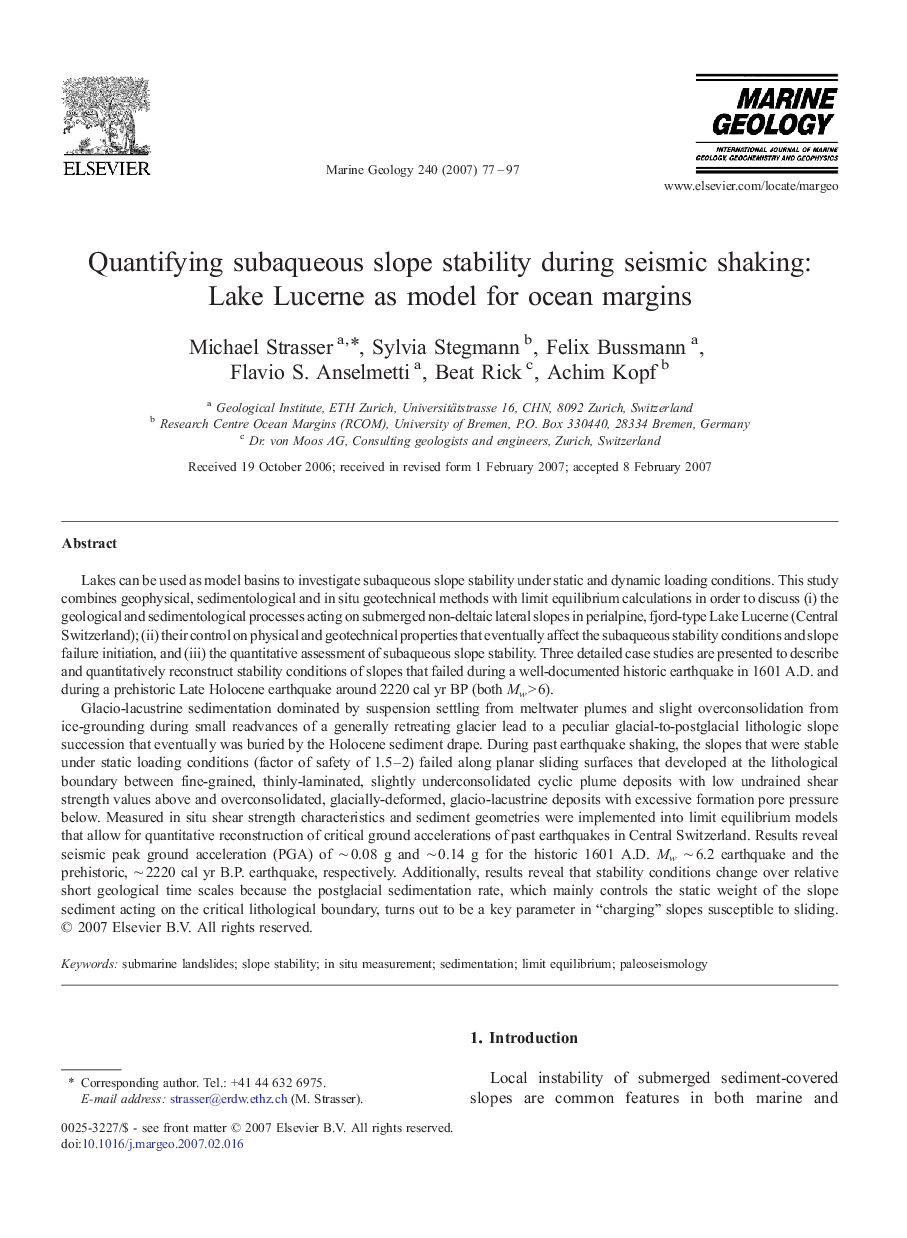| Article ID | Journal | Published Year | Pages | File Type |
|---|---|---|---|---|
| 4719416 | Marine Geology | 2007 | 21 Pages |
Lakes can be used as model basins to investigate subaqueous slope stability under static and dynamic loading conditions. This study combines geophysical, sedimentological and in situ geotechnical methods with limit equilibrium calculations in order to discuss (i) the geological and sedimentological processes acting on submerged non-deltaic lateral slopes in perialpine, fjord-type Lake Lucerne (Central Switzerland); (ii) their control on physical and geotechnical properties that eventually affect the subaqueous stability conditions and slope failure initiation, and (iii) the quantitative assessment of subaqueous slope stability. Three detailed case studies are presented to describe and quantitatively reconstruct stability conditions of slopes that failed during a well-documented historic earthquake in 1601 A.D. and during a prehistoric Late Holocene earthquake around 2220 cal yr BP (both Mw > 6).Glacio-lacustrine sedimentation dominated by suspension settling from meltwater plumes and slight overconsolidation from ice-grounding during small readvances of a generally retreating glacier lead to a peculiar glacial-to-postglacial lithologic slope succession that eventually was buried by the Holocene sediment drape. During past earthquake shaking, the slopes that were stable under static loading conditions (factor of safety of 1.5–2) failed along planar sliding surfaces that developed at the lithological boundary between fine-grained, thinly-laminated, slightly underconsolidated cyclic plume deposits with low undrained shear strength values above and overconsolidated, glacially-deformed, glacio-lacustrine deposits with excessive formation pore pressure below. Measured in situ shear strength characteristics and sediment geometries were implemented into limit equilibrium models that allow for quantitative reconstruction of critical ground accelerations of past earthquakes in Central Switzerland. Results reveal seismic peak ground acceleration (PGA) of ∼ 0.08 g and ∼ 0.14 g for the historic 1601 A.D. Mw ∼ 6.2 earthquake and the prehistoric, ∼ 2220 cal yr B.P. earthquake, respectively. Additionally, results reveal that stability conditions change over relative short geological time scales because the postglacial sedimentation rate, which mainly controls the static weight of the slope sediment acting on the critical lithological boundary, turns out to be a key parameter in “charging” slopes susceptible to sliding.
